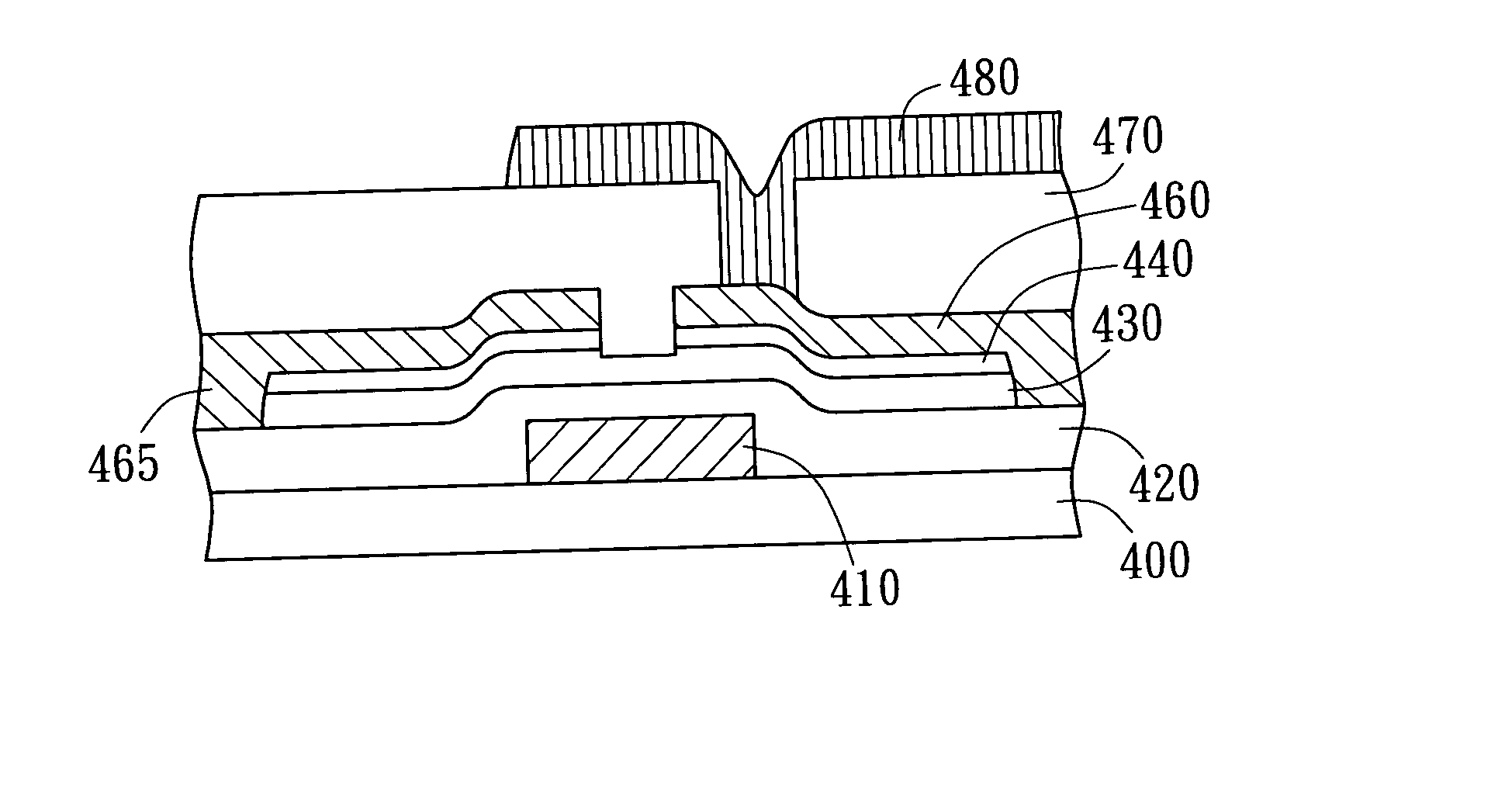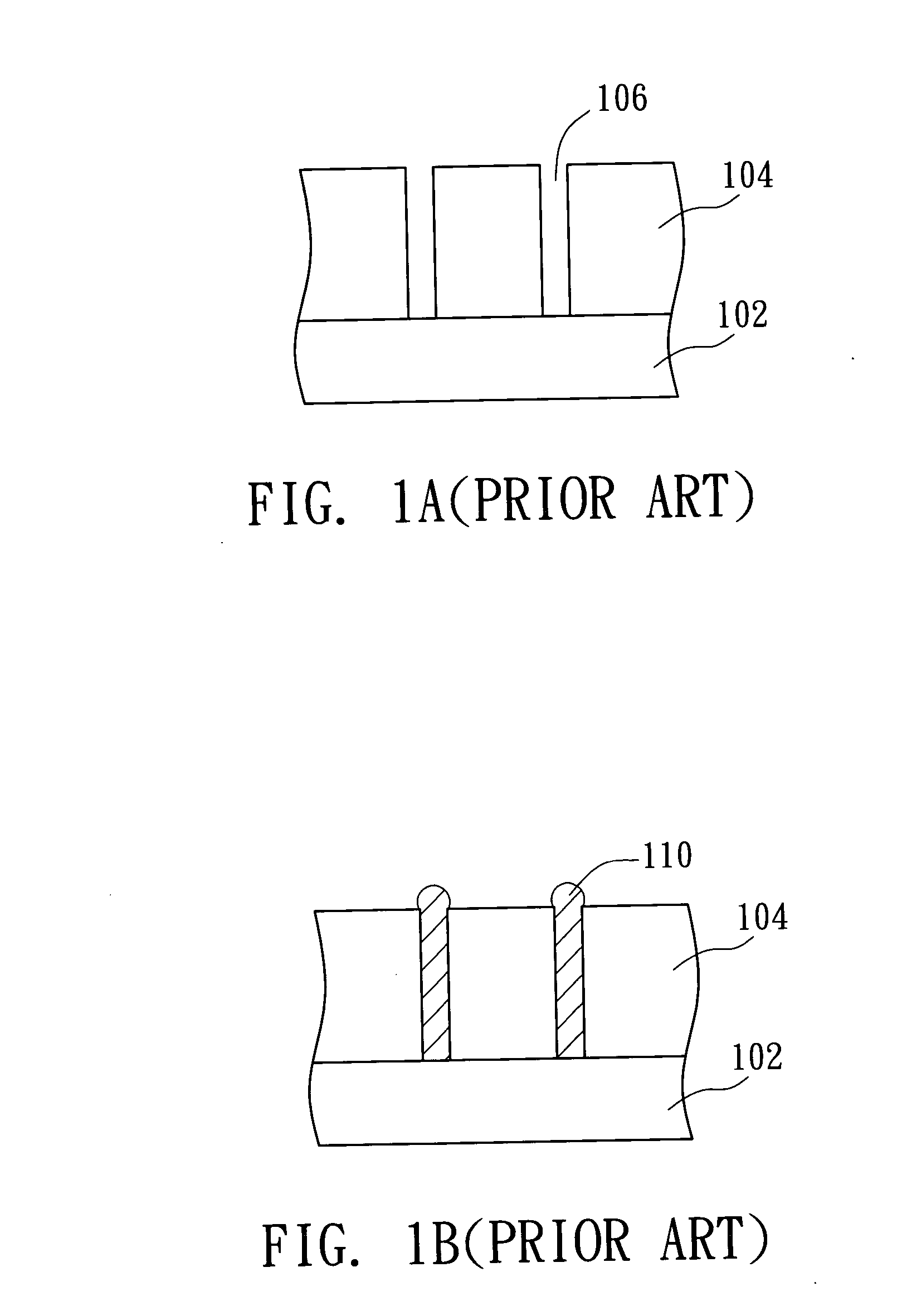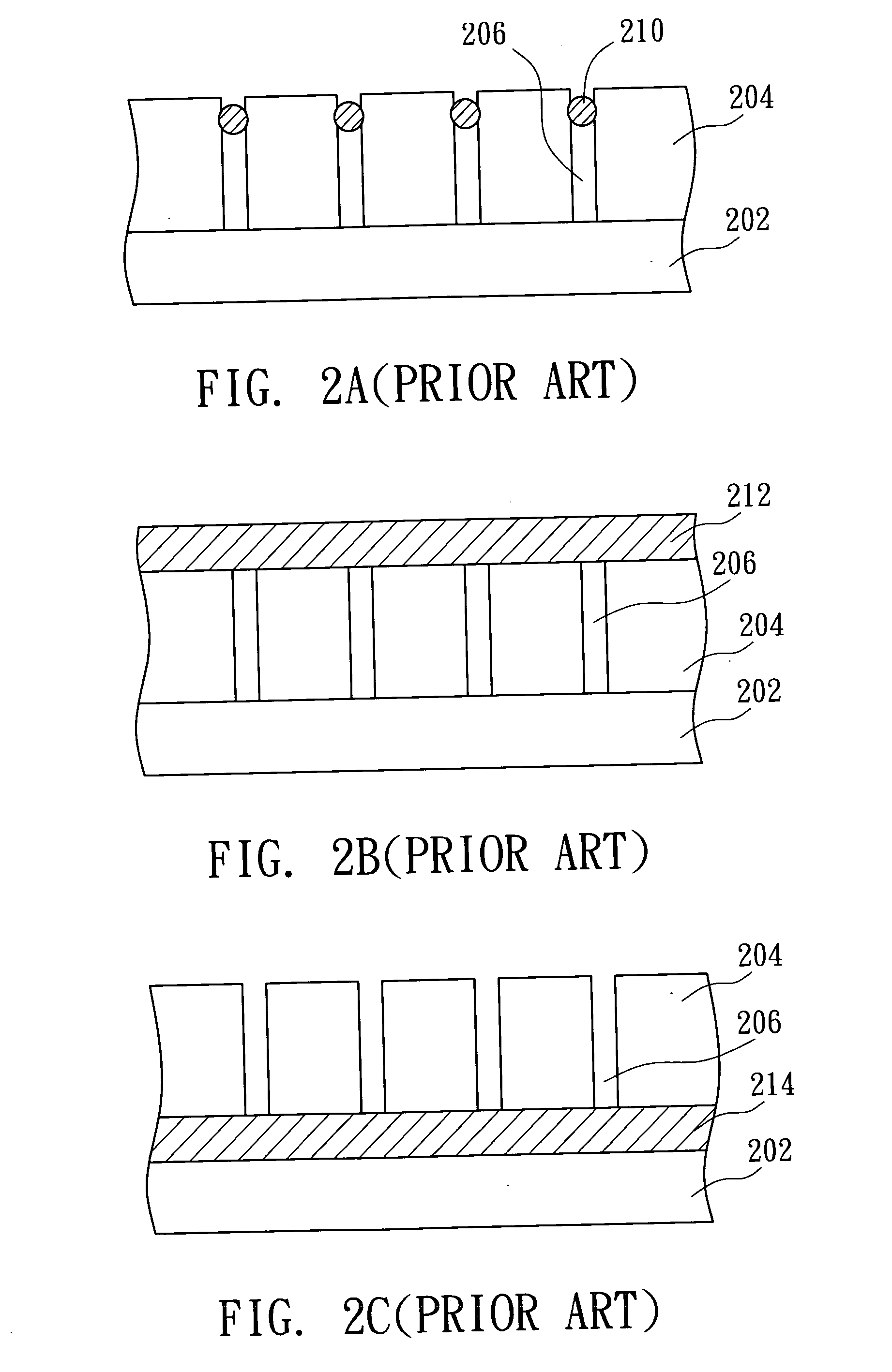Hillock-free aluminum layer and method of forming the same
a technology of aluminum layer and conductive layer, which is applied in the direction of natural mineral layer products, instruments, and semiconductor/solid-state device details, can solve the problems of low resistance and production cost reduction, and achieve the effect of preventing hillocks, hillocks and the like, and low resistan
- Summary
- Abstract
- Description
- Claims
- Application Information
AI Technical Summary
Benefits of technology
Problems solved by technology
Method used
Image
Examples
example 1
Comparative Example
[0033] Under the sputtering conditions of film formation pressure of 0.3 Pa and Ar gas, a pure Al film having a thickness of 2000 Å is formed on the glass substrate. Thereafter, the structure is annealed at a temperature of 340° C. for 30 minutes. Then, it is observed by scanning electron microscopy (SEM) after annealing process.
[0034] The result shows that the hillocks and the like occur if no other buffering layer exists.
example 2
[0035] First, a barrier Al film which is made of the aluminum nitride having a thickness of 200 Å is formed by reactive sputtering on the glass substrate under a film formation pressure of 0.5 Pa. A pure Al film having a thickness of 2000 Å is formed on the barrier Al film under a film formation pressure of 0.3 Pa. The thickness ratio of the barrier Al layer to the pure Al layer is about 1:10. Thus, the stacked structure including: pure Al layer (2000 Å) / AlNx (200 Å) / substrate, is annealed at a temperature of 340° C. for 30 minutes and then observed by SEM, respectively.
[0036] The results show that the hillocks and the like still occur. The thickness ratio of the barrier Al layer to the pure Al layer (1:10) is too low to buffer the thermal stress between the glass substrate and Al atoms. Also, after conducting the subsequent processes (such as photolithography and etching), the barrier Al layers are over-etched and the sectional profiles of these stacked structures are not well.
example 3
[0037] The procedures of Example 2 is followed to produced the stacked structures having a barrier Al layer (AlNx) in a thickness of 300 Å on a glass substrate and a pure Al layer in a thickness of 2000 Å over the barrier Al layer. The thickness ratio of the barrier Al layer to the pure Al layer is about 1:6.7.
[0038] The stacked structures are annealed at a temperature of 340° C. for 30 minutes and then observed by SEM. The results indicate that hillocks and the like are still raised. The thickness ratio of the barrier Al layer to the pure Al layer (1:6.7) is still too low to buffer the thermal stress between the glass substrate and Al atoms. Also, after conducting the subsequent processes (such as photolithography and etching), the barrier Al layers are over-etched and the sectional profiles of these stacked structures are not well.
PUM
| Property | Measurement | Unit |
|---|---|---|
| Pressure | aaaaa | aaaaa |
| Thickness | aaaaa | aaaaa |
| Ratio | aaaaa | aaaaa |
Abstract
Description
Claims
Application Information
 Login to View More
Login to View More - R&D
- Intellectual Property
- Life Sciences
- Materials
- Tech Scout
- Unparalleled Data Quality
- Higher Quality Content
- 60% Fewer Hallucinations
Browse by: Latest US Patents, China's latest patents, Technical Efficacy Thesaurus, Application Domain, Technology Topic, Popular Technical Reports.
© 2025 PatSnap. All rights reserved.Legal|Privacy policy|Modern Slavery Act Transparency Statement|Sitemap|About US| Contact US: help@patsnap.com



